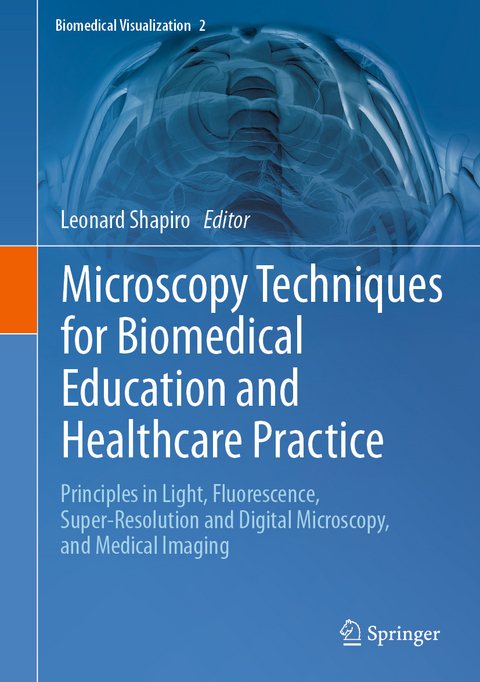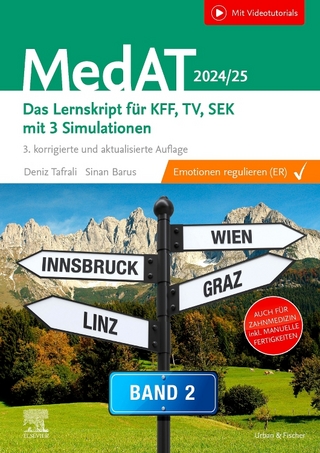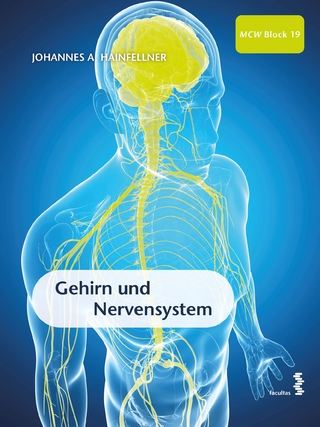
Microscopy Techniques for Biomedical Education and Healthcare Practice
Springer International Publishing (Verlag)
978-3-031-36849-3 (ISBN)
This edited book has a strong focus on advances in microscopy that straddles research, medical education and clinical practice. These advances include the shift in power from conventional to digital microscopy. The first section of this book covers imaging techniques and morphometric image analysis with its applications in biomedicine using different microscopy modes. Chapters highlight the rich development of fluorescence methods and technologies; particle tracking techniques with applications in biomedical research and nanomedicine; the way in which visualizations have revolutionized taxonomy from gross anatomy to genetics; and the psychology of perception and how it affects our understanding of cells and tissues. The book's first section concludes by exploring the use of CT modalities to evaluate anterior deformities in craniosynostosis. In the second section of the book, chapters on anatomical and cell biology education explore the history of anatomical models and their use in educational settings. This includes examples in 3D printing and functional human anatomical models that can be created using easily available resources and the use of biomedical imaging in visuospatial teaching of anatomy; the novel use of ultrasound in medical education and practice; and skill acquisition in histology education using a flowchart called a 'decision tree'.
This book will appeal to histologists, microscopists, cell biologists, clinicians and those involved in anatomical education and biomedical visualization, as well as students in those respective fields.lt;p>Leonard Shapiro - Leonard is an artist working in the field of anatomy education in the Department of Human Biology, University of Cape Town, South Africa. He has developed a novel, multi-sensory observation method that specifically employs the sense of touch (haptics) coupled with the simultaneous act of drawing. It is called the Haptico-visual observation and drawing (HVOD) method.
In anatomy education, the benefits of using the HVOD method include the enhanced observation of the three-dimensional (3D) form of different anatomical parts of the human body, the memorization of these parts as a 3D mental picture, improved 3D spatial awareness, and an ability to draw. HVOD is taught in group workshops online or in physical classroom settings and is offered to medical students, clinicians and anatomy lecturers.
Leonard has taught the HVOD method at the University of Cape Town (South Africa), Newcastle University (England), The University of British Columbia (Canada), Carnegie Mellon University (USA), The Gordon Museum of Pathology at King's College London (England), University College Cork (Ireland), Weill Cornell Medical College (USA).Leonard contributes to the anatomy education discourse via publications and articles and by presenting at anatomy conferences.
Leonard Shapiro, B.Soc.Sc., B.A. Fine Art (Hons), University of Cape Town.
Part I. Advances in Microscopy for Visualization, Education and Healthcare Practice.- Chapter 1. Visualizing the Invisible: Microscopy and How It Affects Our Understanding of Cells and Tissues.- Chapter 2. Morphometric Image Analysis and Its Applications in Biomedicine Using Different Microscopy Modes.- Chapter 3. The Shift in Power from Conventional to Digital and Virtual Microscopy.- Chapter 4. How Visualizations Have Revolutionized Taxonomy: From Macroscopic, to Microscopic, to Genetic.- Chapter 5. Bright New World: Principles of Fluorescence and Applications in Spectroscopy and Microscopy.- Chapter 6. An Introduction to Particle Tracking Techniques with Applications in Biomedical Research.- Chapter 7. An Exploration of the Practice of CT Modalities to Evaluate Anterior Cranial Deformities in Craniosynostosis.- Part II. Anatomical and Cell Biology Education.- Chapter 8. The Use of Biomedical Imaging in Visuospatial Teaching of Anatomy.- Chapter 9. Ultrasound Imaging for Musculoskeletal Research.- Chapter 10. Skill Acquisition in Histology Education.
| Erscheinungsdatum | 30.09.2023 |
|---|---|
| Reihe/Serie | Biomedical Visualization |
| Zusatzinfo | XIV, 228 p. 107 illus., 94 illus. in color. |
| Verlagsort | Cham |
| Sprache | englisch |
| Maße | 178 x 254 mm |
| Gewicht | 647 g |
| Themenwelt | Medizin / Pharmazie ► Studium |
| Schlagworte | Anatomy Education • Biology Teaching • Biomedical Imaging • Computed tomography • graphic medicine • health ethics • Histology • medical education • Medical illustration • Morphometric Image Anaylsis • particle tracking • Super-resolution Microscopy • Ultrasound • virtual microscopy |
| ISBN-10 | 3-031-36849-5 / 3031368495 |
| ISBN-13 | 978-3-031-36849-3 / 9783031368493 |
| Zustand | Neuware |
| Haben Sie eine Frage zum Produkt? |
aus dem Bereich


